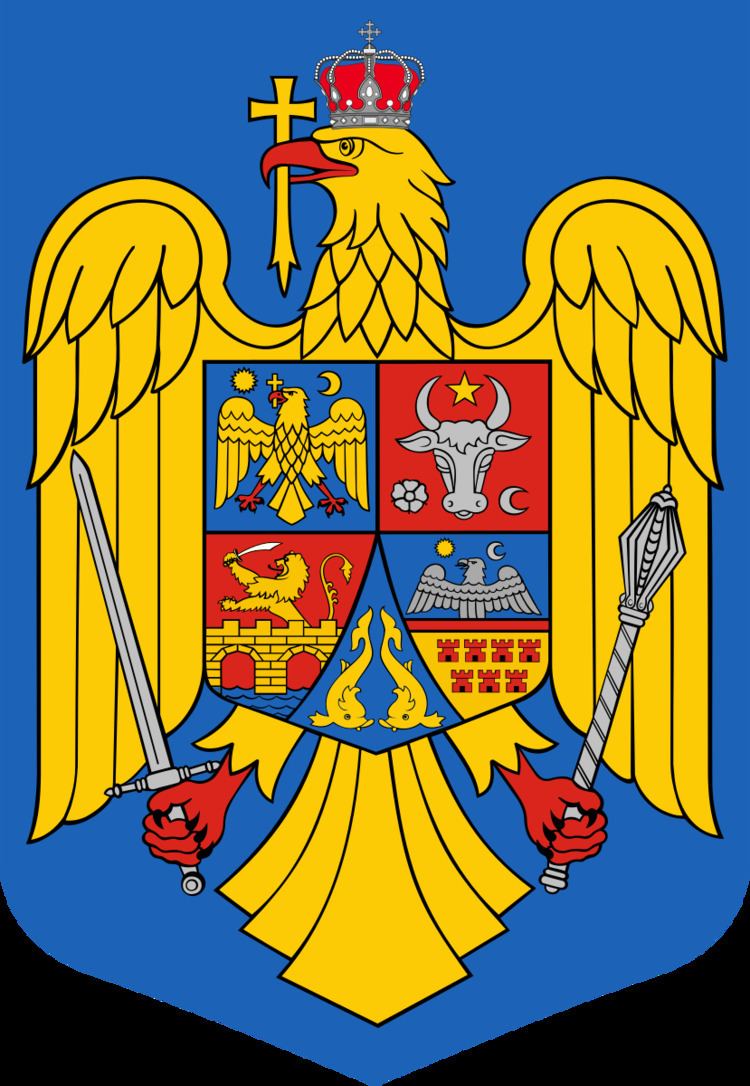 | ||
This article lists Political Parties in Romania.
Contents
Overview
Romania has a multi-party system with numerous political parties, in which no one party often has a chance of gaining parliamentary majority alone, and parties must work with each other to form coalition governments. The current system was established following the Romanian Revolution of 1989 and the adoption of a new constitution in 1991; prior to these events, Romania was a single-party state under the Communist Party of Romania.
Since the early 1990s, Romanian politics saw a gradual decrease in the number of parties entering Parliament and a relative consolidation of existing parties along ideological lines. Major parties can be roughly grouped into liberal, social democratic or conservative "families". Extremist groups have a relatively low political profile in Romania, despite a surge in popularity of far right and Eurosceptic parties across Europe in the 2010s. Party switching (traseism politic) remains an issue, however, as does corruption, leading to an overall low level of public trust in political parties (12% in December 2014). To counter this perception, the two largest parties as of 2015 (the Social Democrats and National Liberals) have initiated a series of internal reforms to strengthen their integrity criteria and impose disciplinary sanctions on party members investigated or convicted on corruption charges.
Legal framework
Article 40 of the Constitution of Romania states that citizens can freely associate into political parties, with the exception of judges, military and police personnel and other civil servants which are apolitical by law. The same article bans parties which campaign against political pluralism, the rule of law, and Romania's sovereignty and territorial integrity. Romania's party system is regulated by Law no. 14/2003 on political parties; the law initially mandated a list of 25,000 supporters, residing in at least 18 counties and the Municipality of Bucharest, for a party to be formally registered. However, in February 2015, the unregistered Pirate Party of Romania filed a complaint with the Constitutional Court, arguing that the list requirement is a violation of the constitutional provisions on freedom of association. The Court subsequently struck down the requirement as unconstitutional, and on 6 May 2015, the Romanian Parliament approved a modified version of the law, which allows the formation of a political party with 3 signatures.
Parties represented in Parliament
Present-day political parties with parliamentary representation, in order of the number or representatives they have in the Chamber of Deputies (governing coalition in bold):
In addition, ethnic minority parties are guaranteed eighteen seats: one for each recognised minority (except Hungarians, who are already represented by the UDMR). However, they are not considered major parties, and are treated below.
Parties without elected representation
Defunct parties
Parties no longer active:
Parties active 1918−1947
The following parties were all active in Romania in the interwar period and, in some cases, through and after World War II. Dates of founding and dissolution are given, where known. Failing that, the earliest and latest dates known for activities are given.
This period saw the proliferation of numerous extremist parties inspired by fascism, socialism and Communism. The latter were effectively banned in 1924 by the so-called Mârzescu law. A succession of coups drastically altered the political landscape as Romania went through a single-party dictatorship under the National Renaissance Front (1938−1940), then a military dictatorship without political parties (1940−1944), then briefly returning to multiparty democracy before finally becoming a people's republic (1944−1947).
Communist-era parties (1947−1989)
Although distinct parties in the communist era were not politically relevant, the following were the officially recognized political forces:
Other parties were allowed to exist, with unclear status, until mid-1948.
